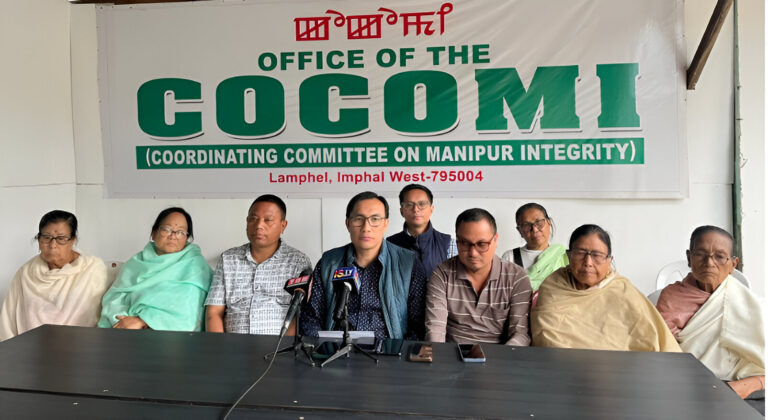Exploring Careers in Photography – Insights from MitSna Foundation’s Interactive Session
Introduction
Ever thought of transforming your passion for capturing moments into a career? For many, photography is a hobby, but for those with the right guidance and dedication, it can become a fulfilling profession. The MitSna Foundation, through its MitSna Interactive Talks (MIT), recently introduced aspiring photographers to career possibilities within photography. Led by Sanasam Okendro Singh, a prominent wildlife photographer, the session focused on wildlife photography but also touched on several other photography avenues. Let’s dive into what was shared at this insightful event and explore the diverse paths photography offers today.
The Photography Landscape: More Than Just Taking Pictures
Photography is often romanticized as a simple click of a button, but it’s far more layered. From documenting stories to advocating for conservation, photographers have unique roles across industries. And while it may sound easy, photography demands dedication, skill, and a keen eye for detail.
Wildlife Photography: Capturing Nature’s Raw Beauty
Wildlife photography has a special allure, but it’s also one of the most challenging branches of photography. Singh’s insights emphasized that being a wildlife photographer requires immense patience and often involves braving harsh environments. However, the reward comes in the form of stunning, rarely-seen images that raise awareness about the beauty and fragility of our ecosystems.
Spotlighting Manipur’s Rich Biodiversity
Singh highlighted Manipur’s unique biodiversity as a muse for his work, including its state bird, the Nongin, and many other endangered species. For photographers looking to make a difference, Manipur offers an untapped world of flora and fauna, making wildlife photography both a mission and an art.
The Need for More Female Photographers
Photography is open to everyone, yet certain fields still lack diversity. Singh noted that Manipur has few women photographers, especially in wildlife photography. By encouraging women to enter the field, the session aimed to break down stereotypes and demonstrate that photography is a viable and exciting option for anyone with a passion for it.
Career Paths in Photography: Opportunities Beyond Wildlife
While wildlife photography has its unique appeal, the world of photography is vast, encompassing everything from event photography to commercial and fine art photography. Here’s a closer look at some popular avenues:
- Event Photography: Covering weddings, birthdays, and corporate events, this genre offers consistent work and opportunities to capture joyful memories.
- Commercial Photography: From product shoots to brand campaigns, commercial photography is a space where artistic skill meets marketing, with clients from various industries.
- Portrait Photography: Ideal for capturing personalities, portrait photography allows photographers to work closely with individuals, helping them tell their stories through images.
- Fine Art Photography: A purely creative field, fine art photography gives photographers the freedom to explore personal visions and create evocative images.
- Travel and Landscape Photography: For those who enjoy exploring new places, this genre combines travel with photography, capturing the world’s beauty for media, tourism boards, and personal portfolios.
Skills and Tools for Aspiring Photographers
Photography is accessible to all, but honing your craft requires mastering several key skills:
- Understanding Camera Gear: Knowing how to use your camera is fundamental. Learning basics like aperture, shutter speed, and ISO will enable you to capture high-quality images.
- Editing Skills: Editing can make or break a photo. Software like Lightroom and Photoshop are standard in the industry, allowing photographers to enhance colors, contrast, and composition.
- Creativity and Composition: Photography is an art form, so being creative is crucial. Understanding composition helps photographers frame their subjects effectively, adding depth and perspective to their work.
- Networking and Marketing: To succeed as a photographer, you must market yourself and your work. Networking with other professionals can open doors to projects, collaborations, and mentorship.
How to Build a Successful Photography Career
1. Invest in the Right Equipment
Photography equipment can be costly, but beginners can start with entry-level cameras or even smartphones. Over time, invest in better lenses and accessories as your skills improve.
2. Create a Strong Portfolio
A portfolio showcases your skills and style. Start by photographing friends, family, or local events, and use these images to build a diverse collection that potential clients can review.
3. Embrace Continuous Learning
Photography is ever-evolving, with new techniques and tools emerging regularly. By staying curious and learning continuously, you can keep your skills sharp and your work fresh.
4. Find a Mentor
A mentor can provide invaluable insights into the industry, helping you navigate the challenges of a photography career. Experienced photographers often share tips that you won’t find in books or online.
Conservation Photography: The Role of Wildlife Photographers in Protecting Nature
One of the most rewarding aspects of wildlife photography is its impact on conservation. Singh’s work serves as both art and advocacy. By photographing rare and endangered species, he raises awareness about the importance of preserving Manipur’s ecosystems. Conservation photography can play a vital role in influencing environmental policies, encouraging preservation efforts, and even inspiring people to value nature more deeply.
Photography Education: Courses and Self-Training
Formal education can help aspiring photographers understand technical aspects, while online courses make it easier for self-starters. Various platforms offer courses covering camera handling, editing, and marketing, allowing photographers to learn at their own pace.
Future of Photography in Manipur: The Role of Foundations Like MitSna
The MitSna Foundation plans to continue these interactive sessions, focusing on different career paths to inspire the youth. These sessions could help create a photography community within Manipur, allowing young photographers to connect, collaborate, and grow. The foundation’s initiative could be the starting point for many aspiring photographers.
FAQs
- What is MitSna Foundation’s purpose with the Interactive Talks?
The MitSna Interactive Talks aim to introduce students to diverse career paths and provide insights from seasoned professionals. - Is photography a sustainable career choice in Manipur?
Yes, with niches like event, wildlife, and commercial photography, there are various opportunities in Manipur. - Can I start a photography career without formal education?
Absolutely! Many photographers are self-taught, with online resources and practice helping them succeed. - What are some affordable photography equipment options?
Beginners can start with entry-level DSLRs, mirrorless cameras, or even smartphones with quality lenses and eventually upgrade. - Why is conservation important in wildlife photography?
Conservation photography helps raise awareness about endangered species and the importance of protecting natural habitats.




